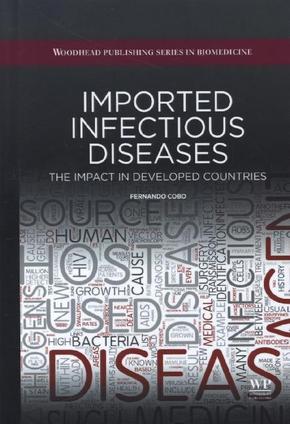
Imported Infectious Diseases - The Impact in Developed Countries
| Verlag | Woodhead Publishing |
| Auflage | 2014 |
| Seiten | 240 |
| Format | 15,5 x 24,2 x 2,0 cm |
| Gewicht | 586 g |
| Artikeltyp | Englisches Buch |
| ISBN-10 | 1907568573 |
| EAN | 9781907568572 |
| Bestell-Nr | 90756857UA |
The increase of immigrant population in developed countries (mainly in Europe and North America) together with an important increase of international travel worldwide are the two most important causes that have contributed to the introduction and diagnosis of imported/tropical infectious diseases in these countries. These factors have had an important impact in developed countries in both social and economic aspects. Imported Infectious Diseases focuses not only on describing the infections, but also in evaluating the current epidemiology, the economic and social impact and the possibility to apply immunization measures and vaccines. The main purpose of this book is to give an overview of the current most important and frequent imported infectious diseases in developed countries. The first chapter informs about the medical services that are being offered to the immigrants in the main developed countries depending on the legal situation. Following chapters describe the main surveil lance systems for these kinds of diseases, mainly in Europe and North America. Finally, remaining chapters contain sections on epidemiology, pathogenesis, clinical features, diagnosis, treatment and prevention.
Inhaltsverzeichnis:
List of figures List of tables Acknowledgements Preface About the author 1: IntroductionAbstract1.1 The real problem of the immigration phenomenon1.2 Immigration health costs in developed countries1.3 Health assistance in immigrants: comparison of several countries1.4 Impact of immigration on infectious diseases in developed countries 2: Epidemiology of infectious diseases in immigrantsAbstract2.1 Importance of immigration in the epidemiology of infectious diseases2.2 Immigration patterns and infectious diseases2.3 Current epidemiological data of the main imported infectious diseases in immigrants2.4 Implications for public health research and intervention policies 3: Surveillance systems for tropical infectious diseases in developed countriesAbstract3.1 Definition of surveillance3.2 Local and regional surveillance systems3.3 National Public Health Institutes3.4 International public health surveillance systems3.5 Information for dise ase prevention and control 4: Febrile syndrome in immigrants and travellersAbstract4.1 Introduction4.2 Assessment of febrile syndrome in immigrants and returned travellers4.3 Standardised diagnosis protocols 5: Diarrhoea syndromeAbstract5.1 Approach to acute diarrhoea in developing countries5.2 Traveller's diarrhoea 6: Current status of malariaAbstract6.1 Disease and pathophysiology6.2 Epidemiology of imported malaria6.3 Biology and ecology of malaria6.4 Clinical features of malaria6.5 Diagnostic procedures6.6 Prevention and prophylaxis: development of a malaria vaccine6.7 Treatment of malaria 7: FilariasisAbstract7.1 Definition7.2 Life cycle7.3 Lymphatic filariasis7.4 Onchocerciasis (river blindness)7.5 Loiasis7.6 Mansonellosis 8: Schistosomiasis (bilharziasis)Abstract8.1 The parasite and the disease8.2 Epidemiology8.3 Pathogenesis8.4 Clinical features8.5 Diagnosis8.6 Treatment 9: StrongyloidiasisAbstract9.1 Definition9.2 Epidemiology9.3 Clinical features9 .4 Risk factors for hyperinfection and severe disease9.5 Diagnosis9.6 Treatment and monitoring9.7 Prevention 10: TrypanosomiasisAbstract10.1 General description10.2 African trypanosomiasis10.3 American trypanosomiasis 11: Taeniasis and neurocysticercosisAbstract11.1 Taeniasis11.2 Neurocysticercosis 12: HIV infectionAbstract12.1 Initial outbreak12.2 Current epidemiological status and mode of transmission12.3 Viral structure and pathogenesis12.4 Clinical manifestations12.5 Diagnosis12.6 Drug treatment12.7 Prevention of HIV transmission 13: SyphilisAbstract13.1 Aetiology13.2 Epidemiology13.3 Natural history and clinical manifestations13.4 Laboratory diagnosis13.5 Treatment of syphilis13.6 Follow-up examinations 14: Tuberculosis: the problem of multiresistanceAbstract14.1 Definition and microbiology14.2 Current epidemiology14.3 Pathogenesis14.4 Clinical manifestations14.5 Diagnosis14.6 Prevention and control14.7 Treatment 15
